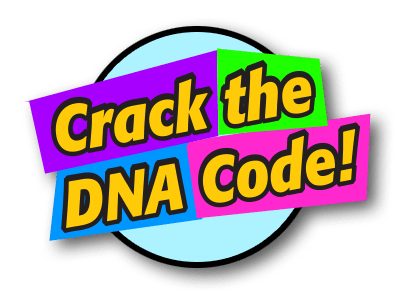George Amato, DNA Detective, in...


Hi, I am George Amato and I'm a molecular biologist at the American Museum of Natural History. I analyze DNA to learn about animals from around the world. Sometimes the government calls me to help solve mysteries, like this time in 1993.
It all began when...

I received a phone call from the U.S. Fish and Wildlife Service. One of their officers told me he had spotted some suspicious packages at Kennedy Airport in New York City. These boxes contained handbags and shoes.
By looking at the pattern on the reptile skins, the officer had a hunch they were made from Yacaré caiman, a relative of the crocodile and alligator.
My blood started to boil. “But the Yacaré caiman is a protected species,” I said into the phone. “Bringing skins of that animal into the U.S. is against the law!”
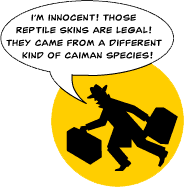
“Exactly!” said the guy at the U.S. Fish and Wildlife Service. “That’s why the officer seized the shoes and handbags from the reptile skin importer.”
“So, what’s the problem?” I asked.
“The importer said it was not a protected caiman,” he said.
The importer claimed that it‘s impossible to tell the difference between caimans just by comparing skin patterns. This disagreement went to court. And that‘s where I came to the rescue.
To solve the DNA mystery...
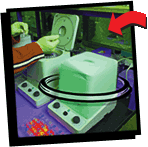
FIRST I took samples of the reptile skins to my lab at the American Museum of Natural History. There I used some high-tech machines to separate the DNA from everything else.
THEN I made lots of copies of the DNA, so it was easier to study.
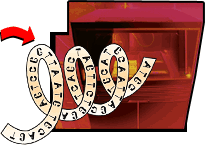
NEXT I used a machine to figure out the DNA’s sequence, which looks like a long string of letters. Every animal species has its own DNA pattern. Geneticists can match DNA patterns the same way police match fingerprints.
FINALLY I compared this skin’s sequence with other crocodilian sequences in our DNA computer library. It was a perfect match to the Yacaré caiman! Those shoes and handbags were definitely made from a legally protected species.
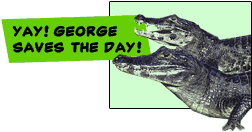
I gave this report to the judge. Based on the DNA evidence, the judge agreed that the skins were illegal. The skins were taken away and the importer had to pay a fine.
Image Credits:
Photos: George Amato, Lab machines: courtesy of Denis Finnin, AMNH; Caimans: courtesy of Santos Breyer, Crocodilian Photo Gallery; Elephant: courtesy of Jason Lelchuk, AMNH; American Crocodile: courtesy of Julio Caballeros Sigme, Florida Museum of Natural History; Tibetan Antelope: courtesy of George B. Schaller; Products: courtesy of Meg Carlough




 Biodiversity
Biodiversity
 Brain
Brain
 Genetics
Genetics
 Marine BiOLogy
Marine BiOLogy
 MicrobiOLogy
MicrobiOLogy
 PaleontOLogy
PaleontOLogy
 ZoOLogy
ZoOLogy
 AnthropOLogy
AnthropOLogy
 ArchaeOLogy
ArchaeOLogy
 Astronomy
Astronomy
 Climate Change
Climate Change
 Earth
Earth
 Physics
Physics
 Water
Water

